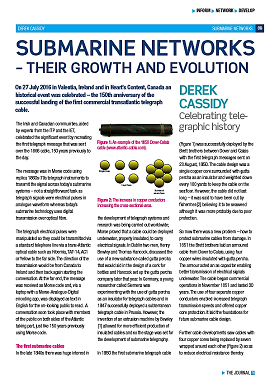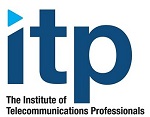Submarine Networks - their growth and evolution

This paper was published in 2017 within the Journal of the Institute of Telecommunications Professionals (Volume 11, Part 1, Pages 9-13) and is made available here with their kind permission.

Introduction
On 27 July 2016 in Valentia, Ireland and in Heart’s Content, Canada an historical event was celebrated – the 150th anniversary of the successful landing of the first commercial transatlantic telegraph cable.
The Irish and Canadian communities, aided by experts from the ITP and the IET, celebrated the significant event by recreating the first telegraph message that was sent over the 1866 cable, 150 years previously to the day.
The message was in Morse code using replica 1860s-70s telegraph instruments to transmit the signal across today’s submarine systems – not a straightforward task as telegraph signals were electrical pulses in analogue waveform whereas today’s submarine technology uses digital transmission over optical fibre.
The telegraph electrical pulses were manipulated so they could be transmitted via a standard telephone line via a trans-Atlantic optical cable such as Hibernia, TAT-14, AC1 or Yellow to the far side. The direction of the transmission would be from Canada to Ireland and then back again starting the conversation. At the far end, the message was received as Morse code and, via a laptop with a Morse-Analogue-Digital encoding app, was displayed as text in English for the on-looking public to read. A conversation soon took place with members of the public on both sides of the Atlantic taking part, just like 150 years previously using Morse code.


Follow on social media .....